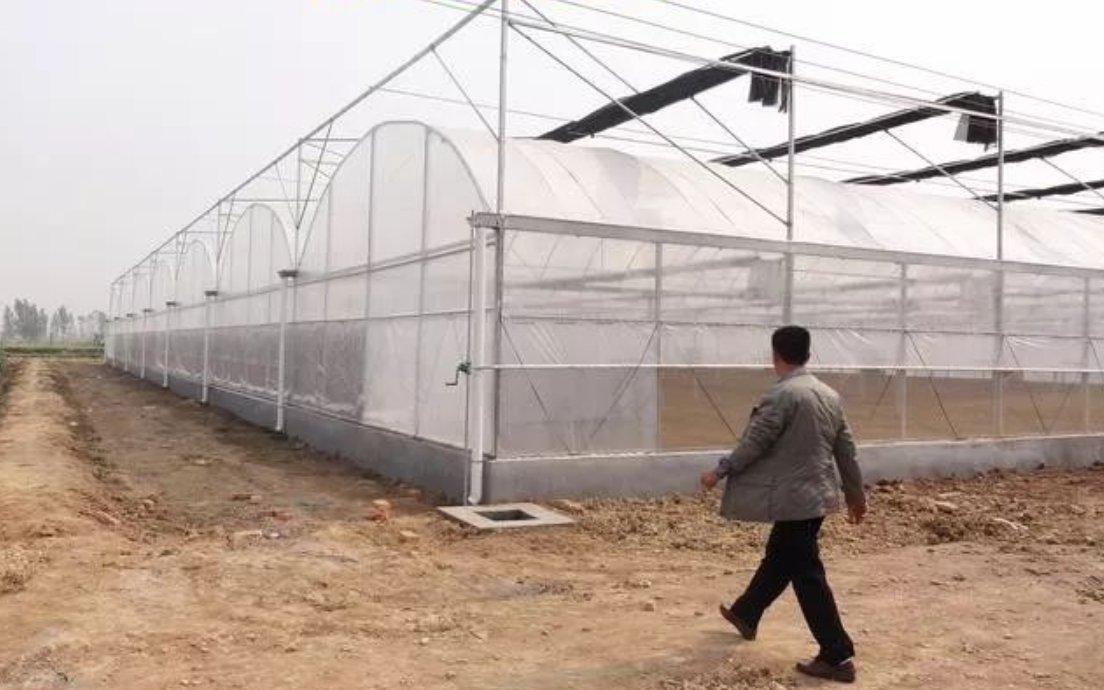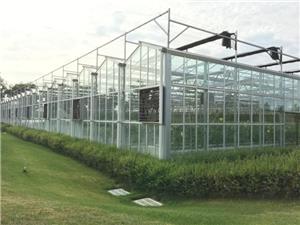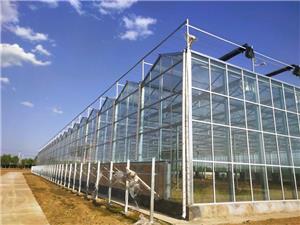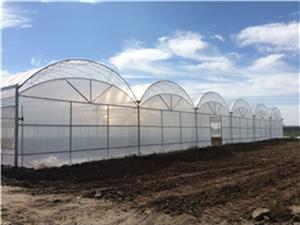What are the common types of films used on greenhouse
Film-covered multi-span greenhouses are the most widely used type of covering material in agricultural production. Their daily applications range from traditional ground-pierced arch greenhouses, solar greenhouses, double-slope greenhouses, multi-span film greenhouses to mushroom greenhouses. So, how should agricultural growers, especially new farmers, choose the right greenhouse film when engaging in agricultural production? Let's briefly introduce greenhouse plastic roll and share some information today.
I. Development Stages of Greenhouse Film
At present, the product structure of greenhouse film should develop towards multi-layer composite, and its performance should tend to be highly transparent, highly heat-insulating, highly strong, long-lasting, and have a continuous period of anti-dripping, anti-fogging, anti-dust, and other functional and comprehensive developments. According to the different production materials greenhouse plastic roll, the development of greenhouse film has roughly gone through four stages: the first is polyethylene (PE) greenhouse film; the second is polyvinyl chloride (PVC) greenhouse film; the third is ethylene-vinyl acetate copolymer (EVA) greenhouse film; the fourth is PO film, and the greenhouse plastic roll fifth generation of five-layer co-extruded film is currently under research and development.
II. Main Characteristics and Differences of Various Types of Greenhouse Films
1. PVC (polyvinyl chloride) greenhouse film. This type of film has good light transmission, with the full light transmission rate of new film reaching over 85%. It has excellent moisture retention, low thermal conductivity, high tensile strength, and strong wind greenhouse plastic roll resistance. It has good chemical stability, being resistant to acids and alkalis. However, its drawbacks include a relatively high specific gravity. For greenhouses of the same area, the usage amount of PVC film is 1/3 more than that of polyethylene film, leading to increased costs. Additionally, it becomes hard and brittle at low temperatures and softens and relaxes at high temperatures. After the additives precipitate, the film surface attracts dust, and its light transmission becomes poor after about one month of use. The residual film causes significant soil pollution and cannot be incinerated due to greenhouse plastic roll the generation of chlorine gas, which leads to environmental pollution. Currently, its usage is gradually decreasing.
2. PE greenhouse film. PE greenhouse film is light, soft, easy to shape, has good light transmission, is non-toxic, and is suitable for various greenhouse greenhouse plastic roll films and ground films. It is currently the main type of agricultural film in China. Different product types such as PE anti-aging (single protection), PE anti-aging and anti-drip (double protection), and PE anti-aging, anti-drip and anti-fog (triple protection) can be produced according to the needs of farmers. It has good anti-aging and anti-drip and anti-fog properties. Its disadvantages are poor weather resistance, poor insulation, and poor adhesion. According to Manager Song, the PE injection film is currently widely used in the market.
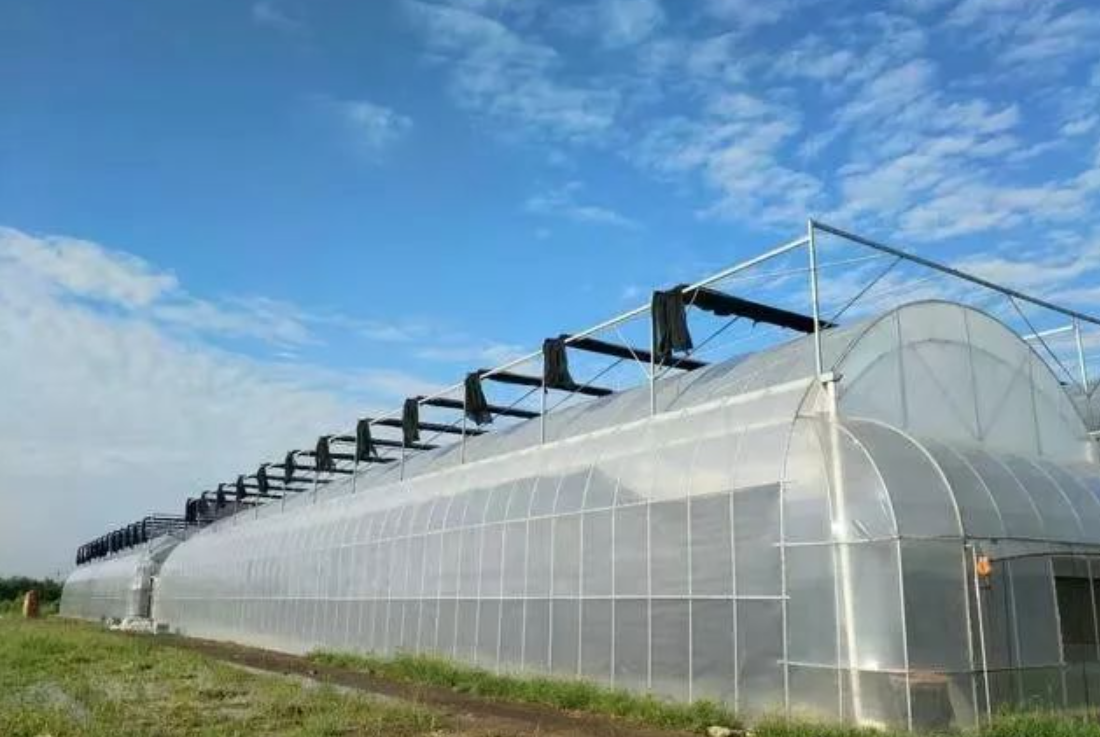
3. The drip and fog-free film is processed again on the basis of the original polyethylene film. The inner surface of the film is treated by coating method. After the treatment, the functional drip and fog-free agent is firmly attached to the inner wall of the film, forming a layer of agent on the inner surface of the film. When the moisture in the greenhouse comes into contact with the inner wall of the film, it will form a water film and then flow down along the slope of the greenhouse due to its own gravity, thus achieving the effect of fog-free and drip-free. The essential difference from the previous film is that the functional agent exists independently outside the film. Therefore, the duration of the fog-free and drip-free function is completely determined by the control of the coating process, the quality of the coated agent and the service life of the film, which can generally last for more than one year.
Of course, there are some individual defects greenhouse plastic roll in the injection film. First, the anti-fog and anti-drip agent is attached to the surface of the agricultural film, so its adhesion is not very strong. External forces can easily cause damage to the coating, which can lead to dripping at the damaged areas. For example, when setting up the greenhouse, the friction greenhouse plastic roll between the inner wall of the greenhouse and the bamboo greenhouse plastic roll poles on the roof, or tall crops touching the agricultural film, can all cause such situations. At the same time, crops that prefer high temperature and high humidity are not suitable for using injection films, such as cucumbers, bitter gourds, and melons. However, despite these flaws, the overall effect of the agricultural film is still significantly better than that of traditional agricultural films. Due to its obvious advantages in anti-fog and anti-drip effects and relatively low cost, about 1.1-1.2 yuan per square meter, compared with EVA film, the input cost is lower, so it is favored by many vegetable farmers. Currently, the quality of injection films varies due to different filling levels. When purchasing, vegetable farmers should conduct multiple investigations on various products and choose to buy from reputable companies.
4. EVA film. EVA greenhouse film is one of the most commonly used types of plastic films for greenhouses at present. This type of film has extremely high light greenhouse plastic roll transmittance, with a light transmittance rate of over 92%; it has excellent droplet removal and fog reduction properties, with a droplet period of more than 4-6 months; it has excellent heat preservation, dust-proof, and extremely strong aging resistance (more than 18 months). Three-layer EVA greenhouse films can be widely used for the production of high-end and greenhouse plastic roll economical non-harmful vegetables, such as cucumbers, tomatoes, peppers, and bitter gourds. The disadvantage is that the price is relatively high, and depending on the thickness specification,
5. PO film is also a new type of film that has emerged in recent years. This type of film is made from polyolefins and is a high-grade functional greenhouse plastic roll polyolefin agricultural film. Its light transmittance, continuous fog removal, droplet flowability, heat preservation properties, etc., are at the forefront among greenhouse films. It has a high cost-performance ratio and is the most promising type of film. Currently, the thickness of PO film ranges from 8 filaments to 15 filaments.
